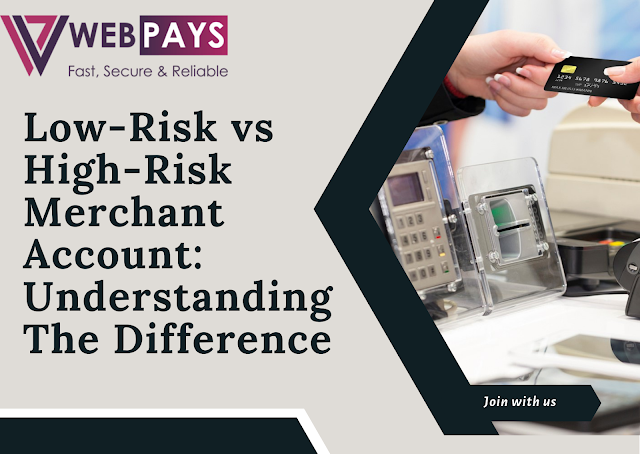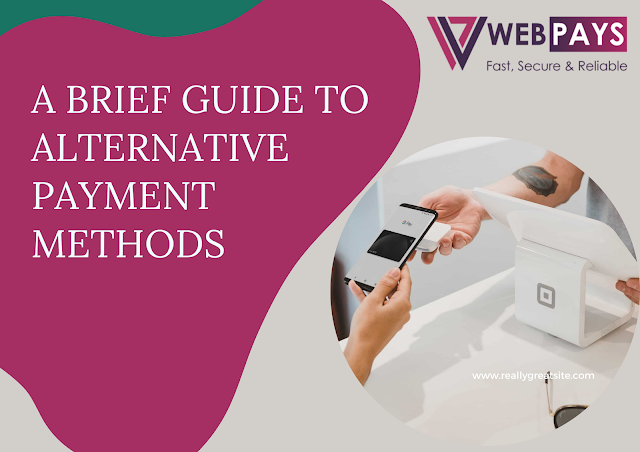Low-Risk vs High-Risk Merchant Account: Understanding The Difference
Businesses are categorized into two main
categories “low risk and high risk” but many of you might be still wondering
about the difference between these two. Right? But no need to be perplexed
anymore as we have come up with this insightful blog about low risk & high risk merchant solutions. So
without further ado let’s read on.
Running a business is exciting until it
comes to dive into the world of payments. Understanding the world of online
payments can feel like a confusing puzzle.
Especially when it comes to merchant accounts, the options can seem
endless. Do you need a low-risk or a high-risk account? What is the difference,
anyway? Whether you are a seasoned
entrepreneur or just starting, understanding the risk factors can save you
time, money, and a whole lot of frustration. So, get ready with your coffee cup
and unlock the valuable aspects of differences between these two.
What is High Risk Merchant Account?
A high risk merchant
account is a specialized financial service tailored to businesses
deemed to have a higher risk of chargebacks, fraud, or regulatory issues.
Industries such as adult entertainment, online gambling, pharmaceuticals, and
travel are often categorized as high-risk due to factors like high risk payment processing,
transaction volumes, recurring billing, or a history of chargebacks.
For example- An
example of a business that might require a high-risk merchant account is an
online gambling platform. Due to the nature of the industry, which involves
high transaction volumes, frequent chargebacks, and regulatory scrutiny,
traditional banks may consider it too risky to process payments for such
businesses. As a result, online casinos and betting websites often seek out
specialized high-risk merchant account providers that can accommodate their
unique needs and mitigate the associated risks.
What is Low Risk Merchant
Account?
A low risk merchant account is held by
businesses considered to pose minimal risk to banks and payment processors.
These businesses typically operate in industries with low chargeback rates,
stable revenue streams, and lower likelihood of fraudulent activity.
For example: An example of a business that
typically qualifies for a low risk merchant account is a local grocery store.
These stores have a steady stream of customers, low instances of chargebacks,
and sell essential goods that people regularly need. Since grocery stores
operate in a stable industry with predictable revenue, banks and payment
processors view them as low risk merchants. As a result, they can benefit from
lower processing fees and fewer restrictions compared to businesses in high
risk industries.
Factors Determining The
Difference Between Merchant Risk Categorization:
Identifying a high-risk merchant account
can be sometimes a bit confusing task for you. Hence, below are the 5 key
factors involved in a high risk payment
processing.
1. Industry Type:
-
Low Risk: Businesses operating in stable industries with low instances of
chargebacks, such as retail stores, grocery stores, and utility providers.
-
High Risk: Industries prone to chargebacks and regulatory scrutiny, such as
adult entertainment, online gaming, and cryptocurrency.
2. Chargeback History:
-
Low Risk: Merchants with a history of minimal chargebacks, indicating satisfied
customers and reliable transactions.
-
High Risk: Merchants with a high frequency of chargebacks, suggesting potential
issues with product quality, customer dissatisfaction, or fraudulent activity.
3. Transaction Volume:
-
Low Risk: Businesses with consistent and moderate transaction volumes,
demonstrating stability and reliability in processing payments.
-
High Risk: Merchants with irregular or exceptionally high transaction volumes,
which may indicate a higher likelihood of fraudulent transactions or financial
instability.
4. Credit History:
-
Low Risk: Merchants with a strong credit history and financial stability,
indicating a lower risk of defaulting on payments or going out of business.
-
High Risk: Merchants with poor credit scores or a history of bankruptcy,
indicating financial instability and a higher likelihood of defaulting on
payment obligations.
5. Product or Service
Offerings:
-
Low Risk: Merchants offering commonly accepted goods or services with low
dispute rates, such as clothing, electronics, or household items.
-
High Risk: Merchants offering products or services associated with higher
dispute rates or legal restrictions, such as tobacco, adult content, or travel
services.
Conclusion:
In a gist, understanding the distinction
between low-risk and high risk merchant
accounts is crucial for businesses navigating the complexities of high risk payments. While low-risk
accounts are typically associated with stable industries and minimal chargeback
rates, high-risk accounts cater to businesses with higher chargeback risks,
such as online gaming or adult entertainment. We hope that this blog has given
you a clear understanding of the differences which will help you to make
informed decisions to streamline the payment processes and mitigate potential
risks effectively.



Comments
Post a Comment